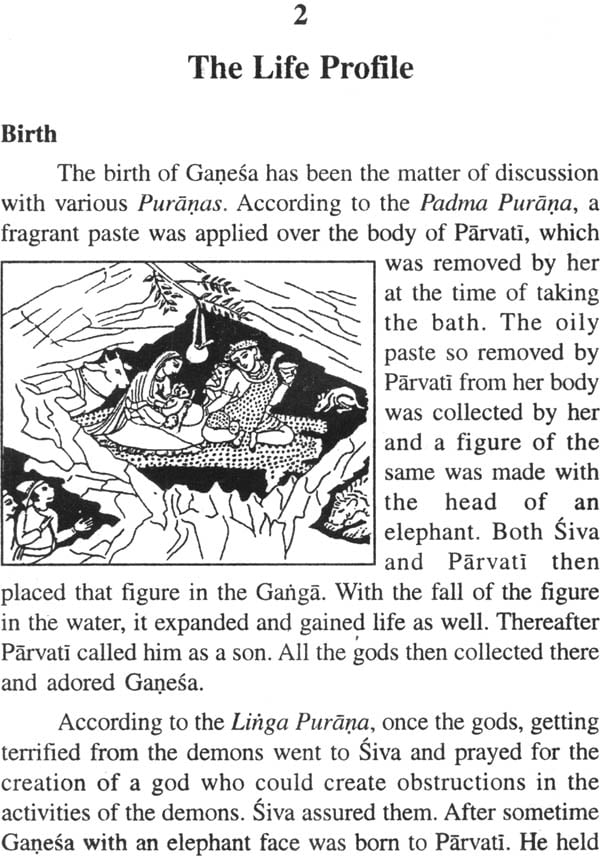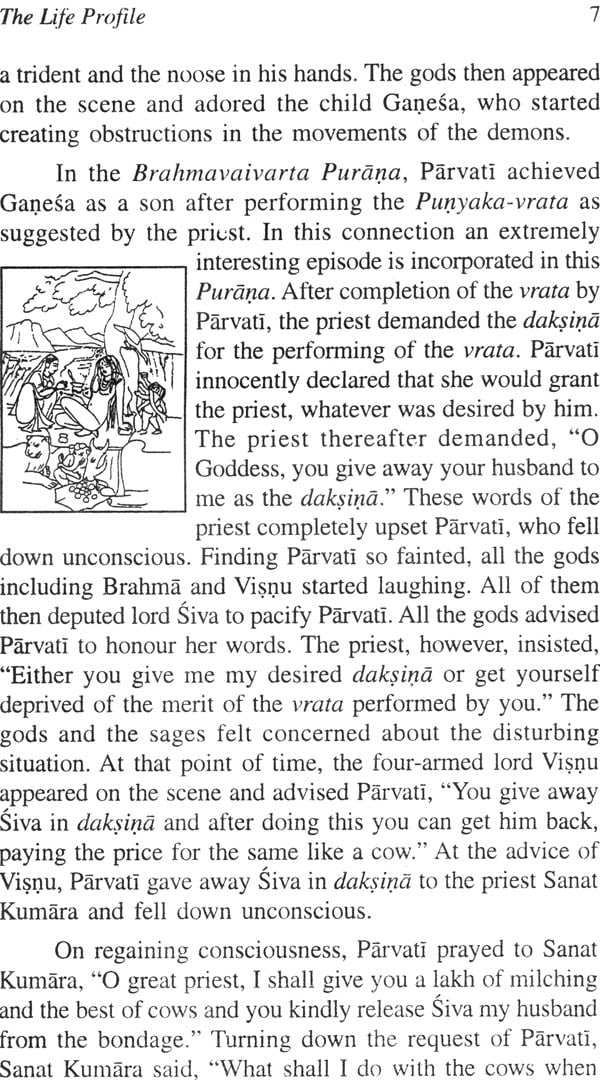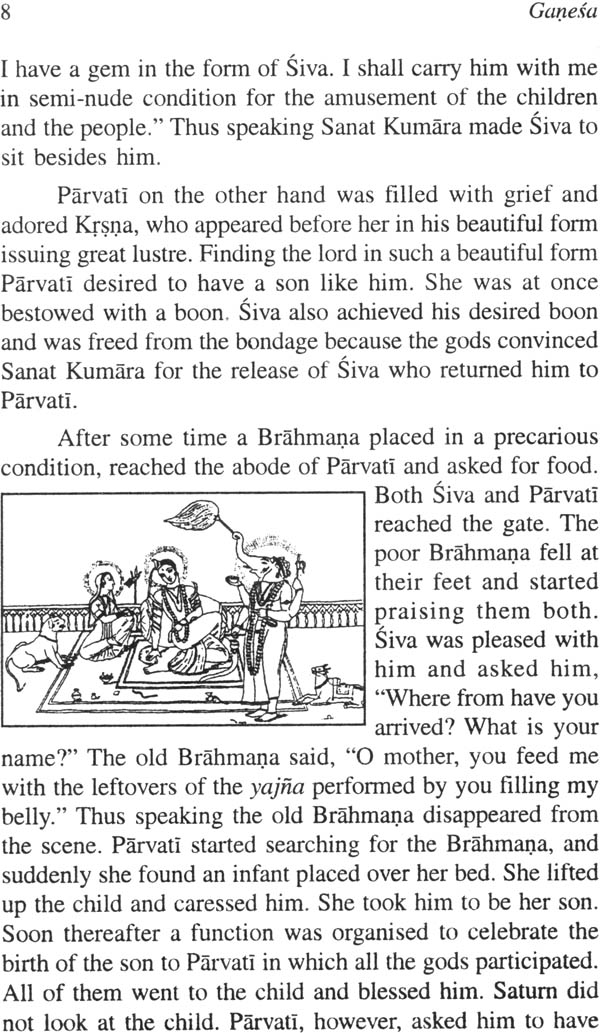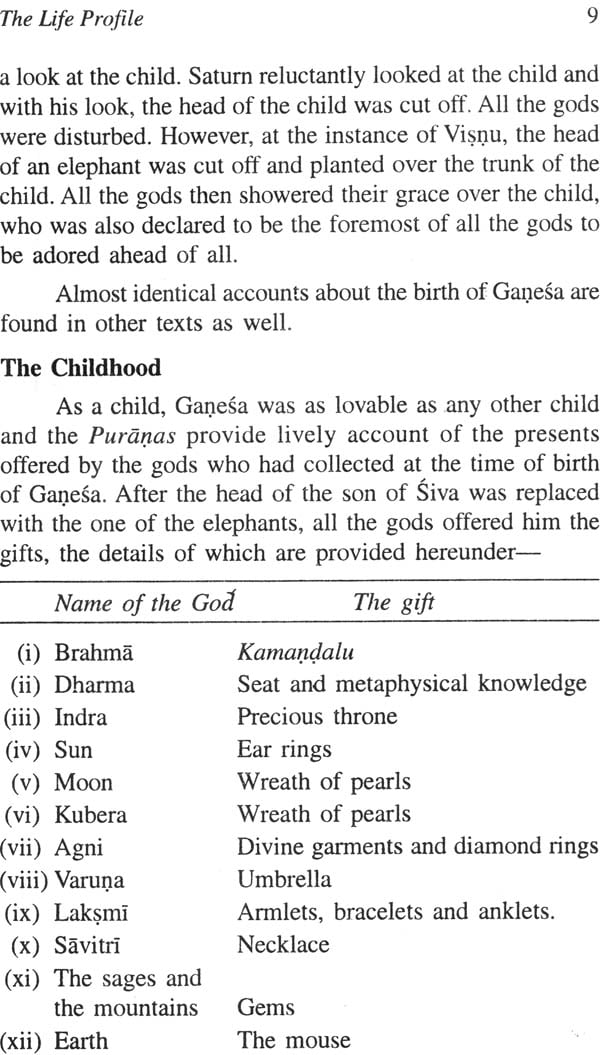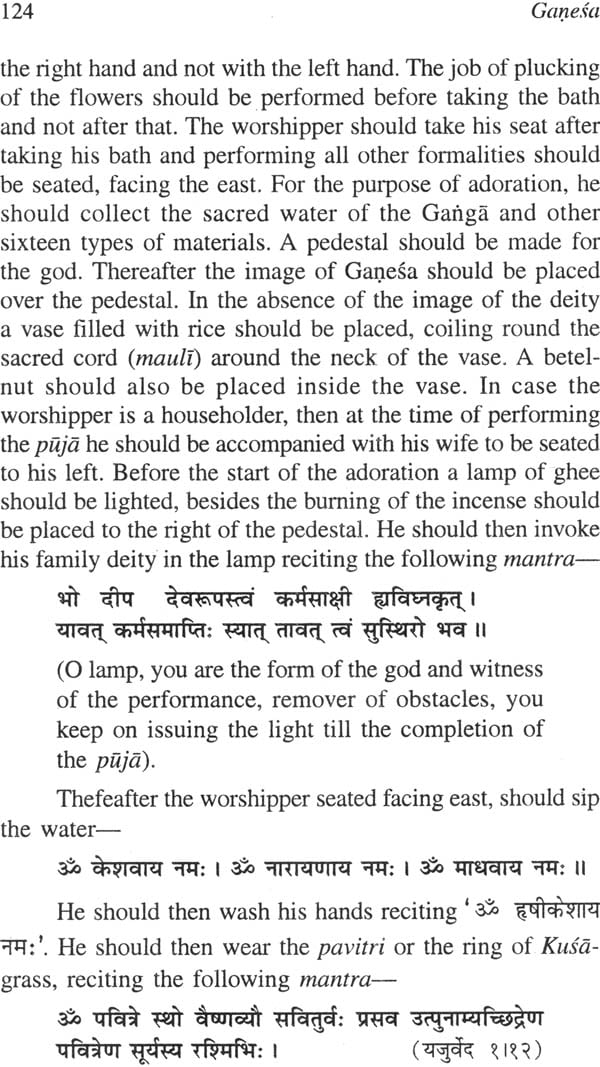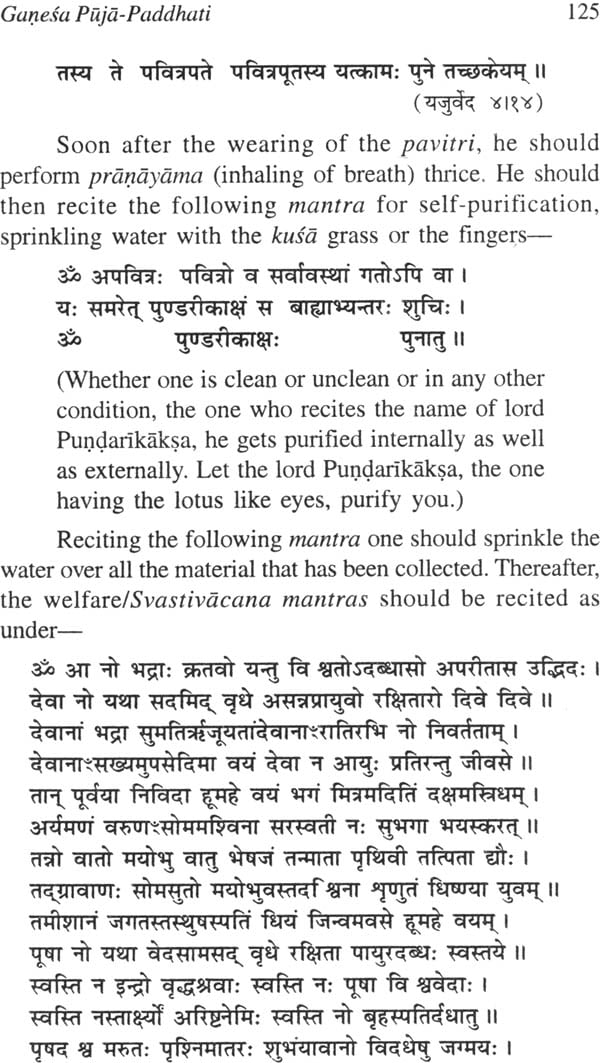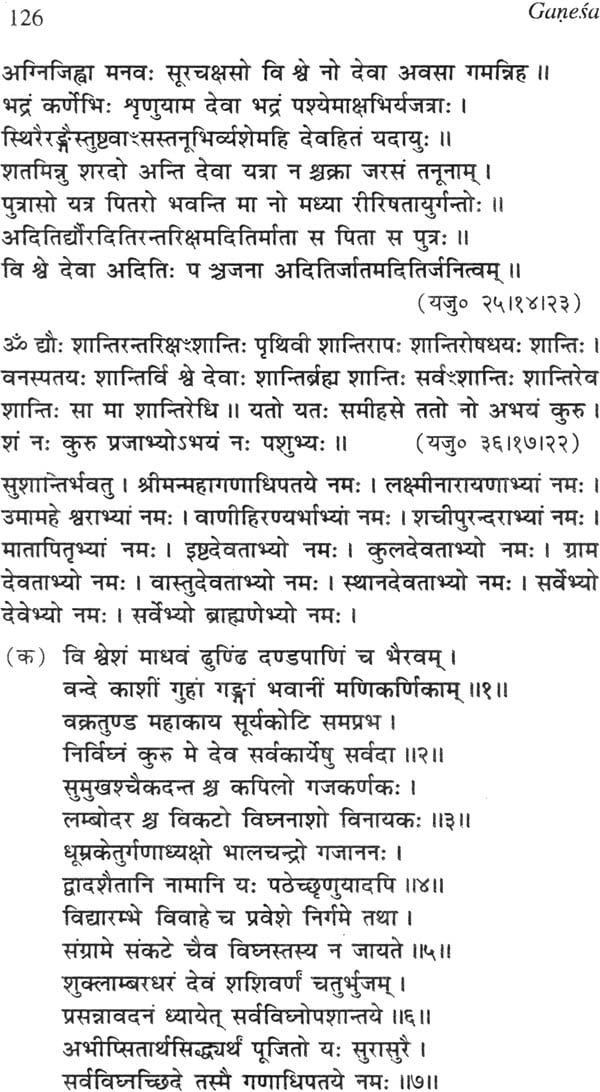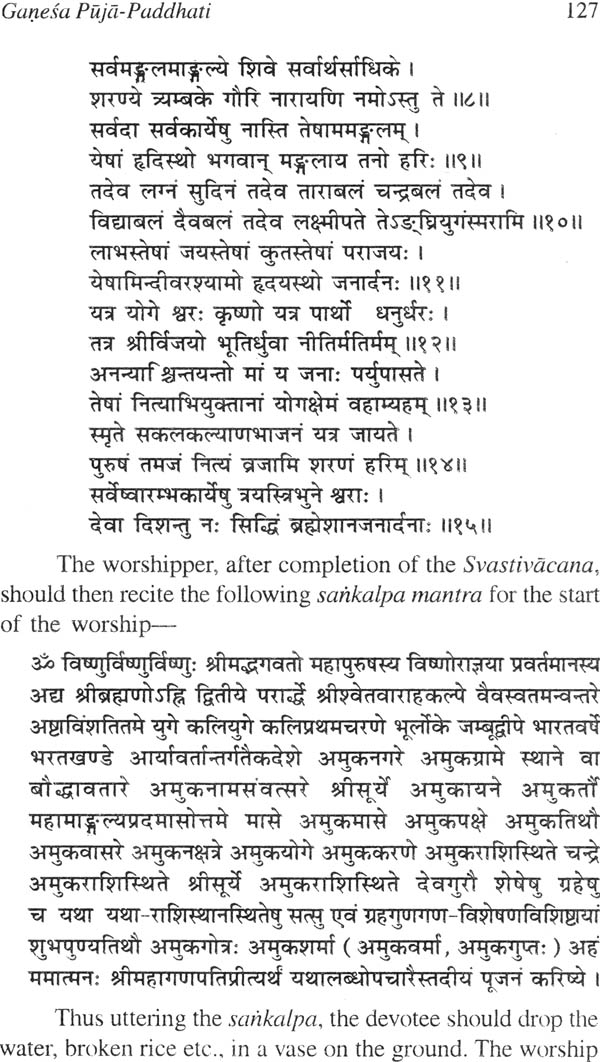
Ganesa The Remover of Obstacles
Book Specification
| Item Code: | NAG025 |
| Author: | Shantilal Nagar |
| Publisher: | B.R. Publishing Corporation |
| Language: | Sanskrit Text with English Translation |
| Edition: | 2006 |
| ISBN: | 9789350500040 |
| Pages: | 152 |
| Cover: | Hardcover |
| Other Details | 8.5 inch X 5.5 inch |
| Weight | 300 gm |
Book Description
Ganesa is one of the important Hindu deities who is the first to be adored on all the important auspicious occasions. He is believed to be the son of paravati, who even came in conflict with his own father siva, and is adorbed by all the gods. The books provides briefly the important events of his life, which may interest the readers.
Shantilal Nagar, a graduate of the Punjab University, served in the curatorial capacity in the Central Asian Antiquities Museum, New Delhi, the Archaeological Museum, Nalanda, and Archaeological Section of the Indian Museum, Kolkata for a number of years. He has to credit the scientific documentation of over fifty thousand antiquities, in these museums, representing the rich cultural heritage of the country and comprising the rich cultural heritage of the country and comprising of sculptures, bronzes, terracottas, beads, seal and sealing, ancient Indian numismatics, wood work, miniatures and paintings, textiles and pearce collection of gems, ranging from the earliest times to the late medieval period. He was awarded, in 1987, a fellowship, for his monograph on the temples of Himachal Pradesh, by the Indian Council of Historical Research, New Delhi. He has authored more than fifity books.
Ganesa who is Known by several other names, emerged over the Indian religious science at quite an early stage. The scholars have tried to trace his presence from certain hymns of the Vedic literature, where he has been described as having the elephant head with a single tusk, but his percentage is hardly to be found at that early stage. Not only that a prototype of Ganesa has been traced in the Harappan culture by scholars, though the name of the deity as well as the purpose of his adoration remains undefined. Indeed he happens to be one of the deities, who tracing their origin to a remote past and his adoration has come down to the modern times as a prominent god who is required to be worshipped first of all. Whatever be the origin of Ganesa the antiquity of his cult cannot be denied. Of course he has been enjoying an exalted position not only in the Brahmanical faith, but also in other contemporary religious of the country like Jainism and Buddhism.
The adoration of Ganesa has been prescribed in almost all the welfare ceremonies of the Hindus. Indeed the name of Ganesa has become the synonymous of the start of a work. The adoration of Ganesa has been prescribed at the start of the welfare ceremony in order to get it accomplished without any obstruction. Thus the practice of the initial adoration of Ganesa is not only followed in India, but also, in the countries like Nepal, Thailand, china, Indo-china, bali, Boeneo, Tibet Myanamar as well as Japan.
The parenthood of Ganesa is elaborately discussed in the Puranic literature. The popular belief in this connection has been that he had been the son of siva and Parvati-the divine couple. At the birth of Ganesa all the gods assembled to facilitate the divine couple. Saturn was one of them. But he avoided to have a look at Ganesa, because his doing so could be harmful to the child. But Saturn at the instant of Parvati, cast a side glance over the head of the child Ganesa as a result of which the head of the child was cut off. This created an uprorarious situation and all the assembled gods were horrified. Ultimately visnu saved the situation by transplanting the head of an elephant over the trunk of Ganesa, earning him the title of Gajanana or the elephant faced god. According to another puranic account, parasurama once went to meet siva and Parvati at Kailasa. Reaching kailasa, he found that Ganesa was guarding the gate of the abode of siva. He therefore prevented Parasurama from entry into the abode of siva. This resulted into a scuffle and parasurama in anger cut off one of the tusk of Ganesa, which earned him the title of Ekadanta.
According to another tradition, Ganesa’s figure was made by Parvati, removing the dirt out of her body and the life was subsequently inserted into it. There is also a tradition that the great sage Vedavyasa was in need of a writer for the writing of the Mahabharata composed by him. The work of the writing of the epic was entrusted to Ganesa, at the instance of Brahma. Ganesa accepted the assignment on the condition that Vyasa should continue the narration uninterruptedly and in case of any break in dicating the epic by Vyasa, he would stop writing. However, Vyasa agreed to the condition of Ganesabut laid down condition, saying that Ganesa should write everything after fully understanding the meaning of each and every passage. When Vyasa desired to have a respite from the continous flow of the verses, he spoke out a kuta (problematic) verse which made it difficult for Ganesa to easily understand it and he took his own time for the purpose. In the mean time Vyasa could create many more verses.
One of the physical features of Ganesa is that he is Lambodara or the one having the pot-belly. There are several accounts relating to the attaining of this title by Ganesa, one of which is the curse from his own mother. Moreover, when Ganesa is conceived to be the lord of agriculture, the pot belly symbolizes the granary or the place for the storage of grains. He is usually endowed with three eyes.
Ganesa’s trunk is curved, which has earned him the title of Vakratunda. He is alos Known by the name of Surpakarna or the one who has the ears like the winnowing basket. The Puranic texts require Ganesa to use the snake as a gridle. Many legends in this regard, the god had to use the snake as a gridle. Many legends in this regard are mentioned in this regard. According to one of them, the god had to use the snake as a gridle, after a fall from his mount, of which his belly was burts, out of which the sweet balls started rolling out. In order to overcome his discomfiture he got up and coiled the snake around his belly. Placing all the sweet balls in it.
Ganesa has also been known by the epithet of Laddukapriya or the one who likes to consume the sweet balls. The philosophical aspect of this epithet has been taken to be as the one who is blissful or grants bliss. Modaka in the philosophical sence could stand for something which delights, or grants ananda or bliss. Ganesa is conceived as holding the modakas (delight), which he is expected to impart to his devotees. This bliss or ananda could be taken to be an aid to salvation. Besides the modakas are also believed to represent the extreme intelligence (Mahabuddhi) which stands for the highest principle. The Ganapatyas, however, believe that the modakas stand for the embryo of life. The bow symbolizes Pranava or Omkara, the two ends of which represent muladhara and sahasradala, which are held by a cord called Susumna. In case an arrow is aim towards the right direction, the cycle of rebirth is shattered. The Cakra is symbolical of dharna which shatters the bondage of vices of the adharma or the sin.
Though the scholars have tried to trace out the genesis of Ganesa in the vedic literature, but the images of the deity of Ganesa in the vedic literature, but the images of the diety forming part of the Indian plastic art, could not be traced before the advent of the Christian era, though he is found mentioned in the contemporary literature viz. the Grhyasutras or the Srauta Sutras, besides the smrtis. However, the emerging of a terracotta plaque of Ganesa from Bhitargaon, dating back to the Gupta period, stands to testify that his adoration was very much in vogue during that period and thereafter, become quite widespread and he achieved the foremost position in all the religious rites and ceremonies. A clay figure of Ganesa from Akra (Pakistan) belonging to this period stands testimony to the fact, that the deity had become popular with the lower strata of the society even at that early stage.
In the common religious practices the welfare hymns are recited to commonly known as Svasti-vacana. All the hymns of the Svati-vacana. All the hymns of the Svastivacana are from the Vedas which were subsequently added to the adoration of Ganesa. It would therefore be of interest to know that the Svastivacana is recited with the formation of Svastika, followed by the adoration of Ganesa. In due course of time the Svasti and Svastika were combined and become inseparable from, success and prosperity as has been commonly used in the scriptures.
Svastika on the other hand is a kind of mystical cross or mark made on a person or things to denote good luck. The scholars believe it to be solar symbol as the curtailed form of the wheel of visnu consisting of four spokes, crossing each other at right angles with short fragments of periphery of the circle at the end of each spoke; turning round in one of each direction to denote the course of the sun. among the jainas, Svastika is one of the twenty-four auspicious marks and is the emblem of the seventh Arhat, though the wings of the cross are placed in the anti-clockwise position. It could thus be inferred that both Svasti and Svastika denote welfare, fortune, success and the like. Interestingly the Svastika symbol also appears in the seals of the Harappan Culture, which carries back the history of the country back to five thousand years.,
Ganesa, also known as ganapati, Gananayaka, Vinayaka and several other titles enjoyed an important position in the Puranic period. Comparatively he appeared over the Indian religious scene as a popular deity at quite a late stage as compared to other important deities like Siva, Visnu, Surya, Durga etc. Even otherwise the puranas testify that he was the son of Parvati and Siva and he attained his sancity after the severing of his head by the look of Saturn and the Subsequent transplanting of the head of an elephant over his headless body.
Ganesa indeed happens to be one of the five principal deities of Hinduism, others being siva, Visnu, surya and Sakti. There is a cult of Ganesa Known as the Ganapatyas. Ganesa is also conceived to be the lord of intelligence. Mahaganapati is conceived to be the one who bestows success in the attaining of all the Knowledge.
Since Ganesa also happens to be the god of learning, the remover of obstacles and the bestower of success and riches, he is invoked at the beginning of all the religious and social functions. His adoration is common practice not only in India, but also in the countries abroad. However, the Svastika form is commonly patronised in some of the European countries as well.
| 1 | Introduction | 1-5 |
| 2 | The Life Profile | 6-20 |
| 3 | The Forms of Ganapati | 21-47 |
| 4 | Physical Features | 48-61 |
| 5 | Other Aspects | 62-79 |
| 6 | Places Scared to Ganesa | 80-83 |
| 7 | Ganesa Abroad | 84-98 |
| 8 | Ganesa Vratas | 99-103 |
| 9 | The Start of Ganesa Worship | 104-120 |
| 10 | Ganesa Puja-Paddhati (Method of Adoration) | 121-143 |
| 11 | Aarti Shri Ganesha ji | 144 |
